
Photographer Malcolm Browne, known for his shocking and iconic image of a self-immolating monk in Saigon, died on Aug. 27, 2012 at the age of 81. Browne was awarded the Pulitzer Prize for International Reporting as well as the World Press Photo of the Year in 1963. In 2011, Browne spoke with TIME international picture editor Patrick Witty from his home in Vermont.
Patrick Witty: What was happening in Vietnam leading up to the day you took your famous photograph of Quang Duc’s self-immolation?
Malcolm Browne: I had been in Vietnam at that point for a couple of years when things began to look ugly in central Vietnam. I took a much greater interest in the Buddhists of Vietnam than I had before, because it seemed to me they were likely to be movers and shakers in whatever turned up next. I came to be on friendly terms with quite a lot of the monks who were leaders of this movement that was taking shape.
Along about springtime (1963), the monks began to hint that they were going to pull off something spectacular by way of protest–and that would most likely be a disembowelment of one of the monks or an immolation. And either way, it was something we had to pay attention to.
At that point the monks were telephoning the foreign correspondents in Saigon to warn them that something big was going to happen. Most of the correspondents were kind of bored with that threat after a while and tended to ignore it. I felt that they were certainly going to do something, that they were not just bluffing, so it came to be that I was really the only Western correspondent that covered the fatal day.
PW: Tell me about that morning. You certainly weren’t expecting something so dramatic but you felt drawn because of a call the night before?
MB: I had some hint that it would be something spectacular, because I knew these monks were not bluffing. They were perfectly serious about doing something pretty violent. In another civilization it might have taken the form of a bomb or something like that.
The monks were very much aware of the result that an immolation was likely to have. So by the time I got to the pagoda where all of this was being organized, it was already underway—the monks and nuns were chanting a type of chant that’s very common at funerals and so forth. At a signal from the leader, they all started out into the street and headed toward the central part of Saigon on foot. When we reached there, the monks quickly formed a circle around a precise intersection of two main streets in Saigon. A car drove up. Two young monks got out of it. An older monk, leaning a little bit on one of the younger ones, also got out. He headed right for the center of the intersection. The two young monks brought up a plastic jerry can, which proved to be gasoline. As soon as he seated himself, they poured the liquid all over him. He got out a matchbook, lighted it, and dropped it in his lap and was immediately engulfed in flames. Everybody that witnessed this was horrified. It was every bit as bad as I could have expected.
I don’t know exactly when he died because you couldn’t tell from his features or voice or anything. He never yelled out in pain. His face seemed to remain fairly calm until it was so blackened by the flames that you couldn’t make it out anymore. Finally the monks decided he was dead and they brought up a coffin, an improvised wooden coffin.
PW: And you were the only photographer there?
MB: As far as I could tell, yes. It turns out that there were some Vietnamese that took some pictures but they didn’t go out—they’re not on the wires or anything like that.
PW: What were you thinking while you were looking through the camera?
MB: I was thinking only about the fact it was a self-illuminated subject that required an exposure of about, oh say, f10 or whatever it was, I don’t really remember. I was using a cheap Japanese camera, by the name of Petri. I was very familiar with it, but I wanted to make sure that I not only got the settings right on the camera each time and focused it properly, but that also I was reloading fast enough to keep up with action. I took about ten rolls of film because I was shooting constantly.
PW: How did you feel?
MB: The main thing on my mind was getting the pictures out. I realized this is something of unusual importance and that I’d have to get them to the AP in one of its far flung octopus tentacles as soon as possible. And I also knew this was a very difficult thing to do in Saigon on short notice.
PW: What did you do with the film?
MB: The whole trick was to get it to some transmission point. We had to get the raw film shipped by air freight, or some way. It was not subject to censorship at that point. We used a pigeon to get it as far as Manila. And in Manila they had the apparatus to send it by radio.
PW: When you say pigeon, what do you mean exactly?
MB: A pigeon is a passenger on a regular commercial flight whom you have persuaded to carry a little package for him. Speed was of the essence obviously. So we had to get it to the airport. It got aboard a flight leaving very soon for Manila.
PW: Did anyone from the AP, once the film arrived, send a message to you saying that the picture was being published all over the world?
MB: No.
PW: You didn’t know?
MB: No, we didn’t know, it was like shooting into a black hole. We learned that it had arrived only after messages began to come through congratulating us for sending such a picture. It was not run by everybody. The New York Times did not run it. They felt it was too grisly a picture that wasn’t suitable for a breakfast newspaper.
PW: I’m looking at the picture now on my screen. Tell me what I’m not seeing —what are you hearing, smelling?
MB: The overwhelming smell of joss sticks. They do make a very strong smell, not a particularly nice smell, but it’s meant to appease the ancestors and all of that. That was the overwhelming smell except for the smell of burning gasoline and diesel and the smell of burning flesh, I must say. The main sound was the wailing and misery of the monks, who had known this guy for many years before and were feeling for him. Then there was shouting over loudspeakers between the fire department people, trying to figure out a way to put him out, put out the flames around him without actually killing him or something. So it was a jumble of confusion.
PW: I read once what President Kennedy said about your photograph. He said, “No news picture in history has generated so much emotion around the world as that one.”
MB: Yeah, that could be, that sounds like an honest quote from the White House.
PW: Would you consider the photograph your crown achievement in journalism?
MB: It attracted a lot of attention, I’ll say that for it. It was not necessarily the hardest story I’ve ever had to cover, but it was certainly an important part of my career.

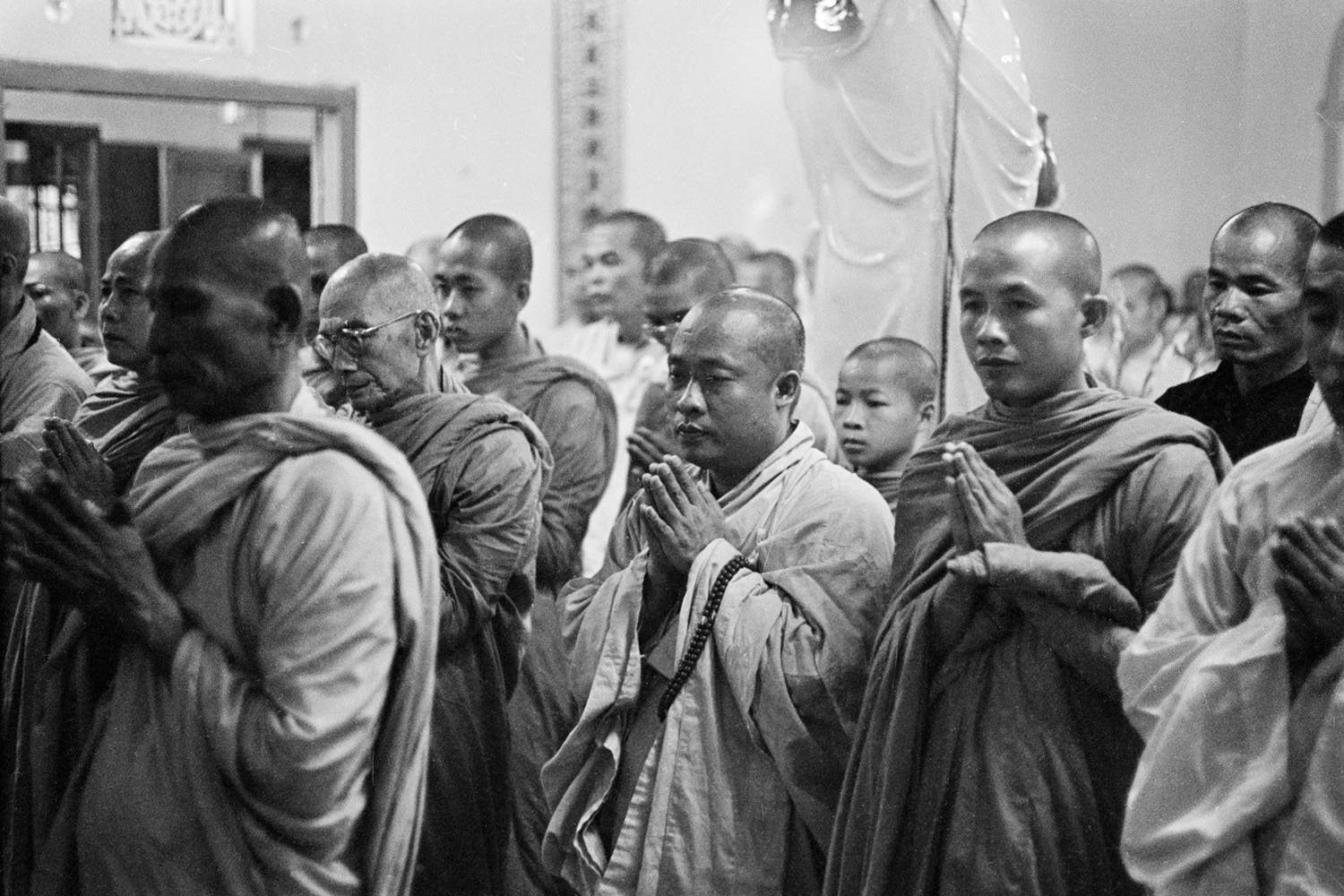



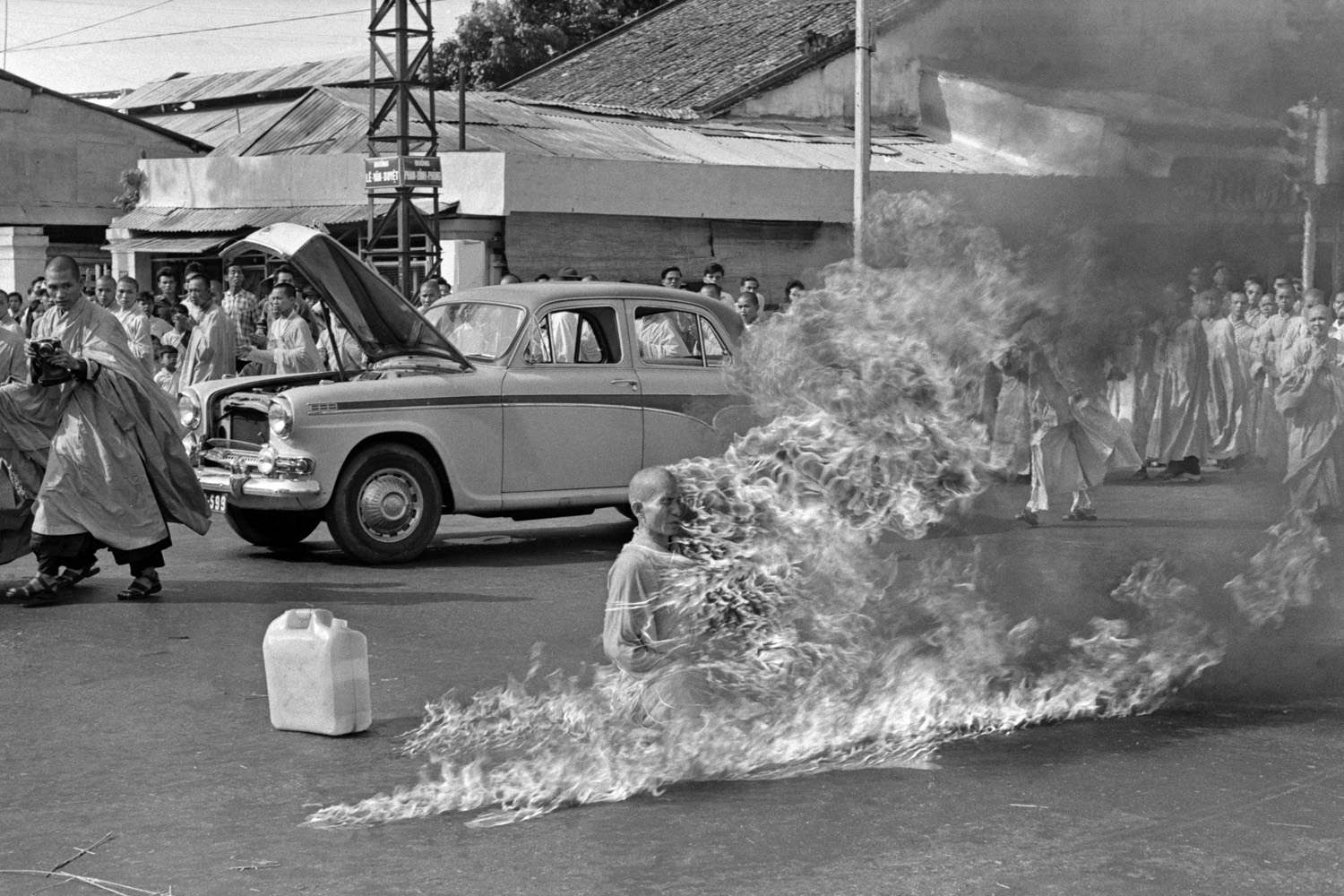
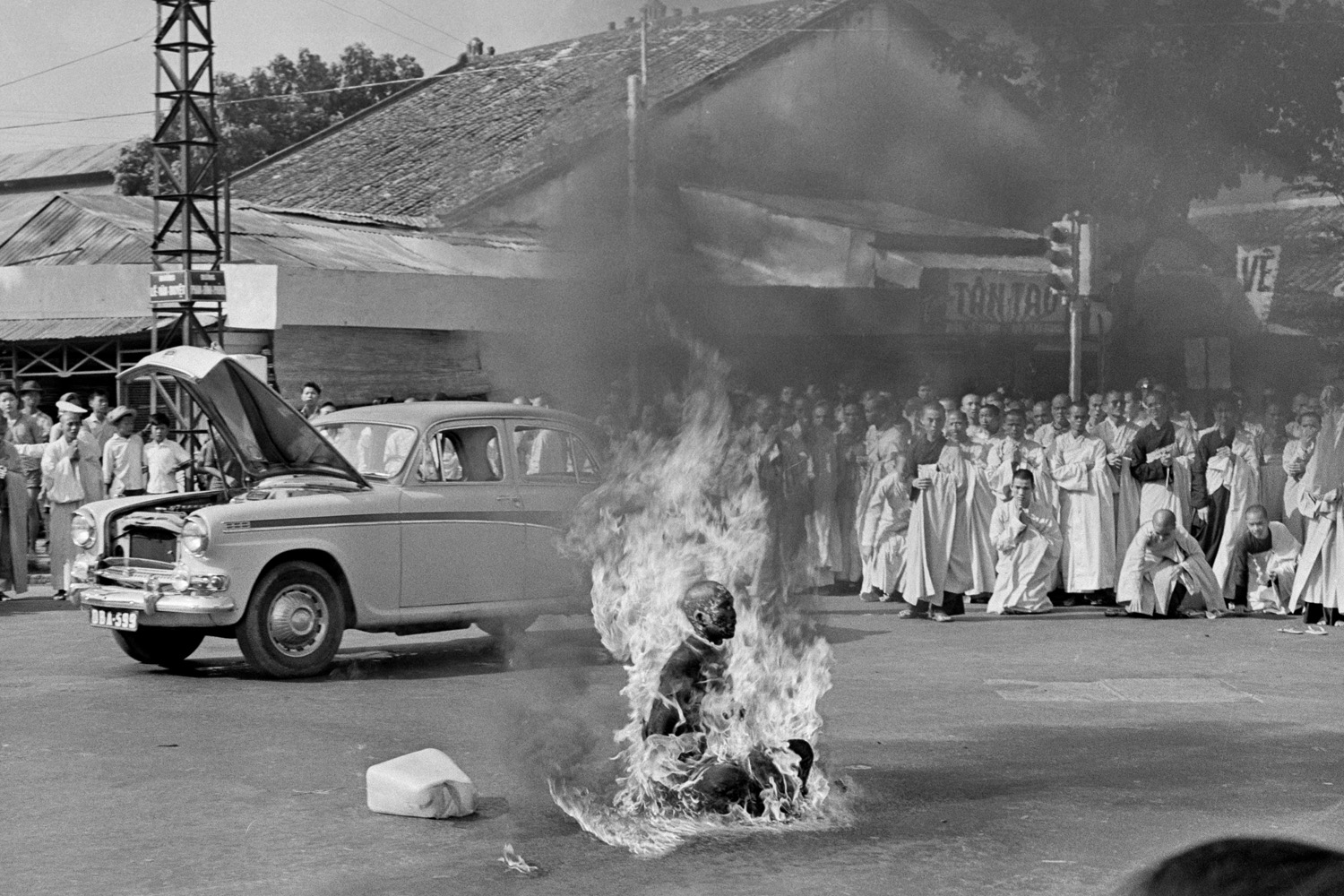

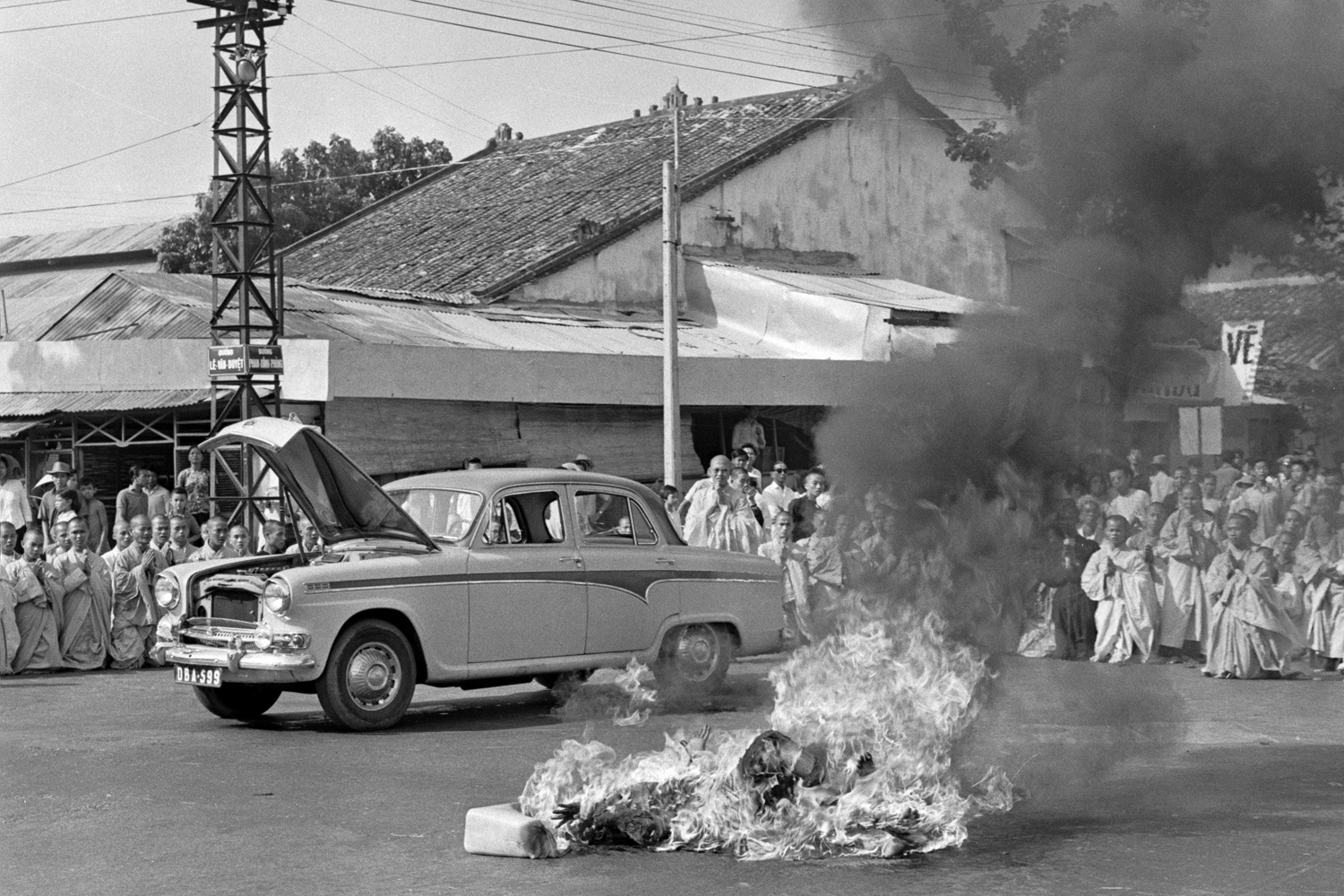

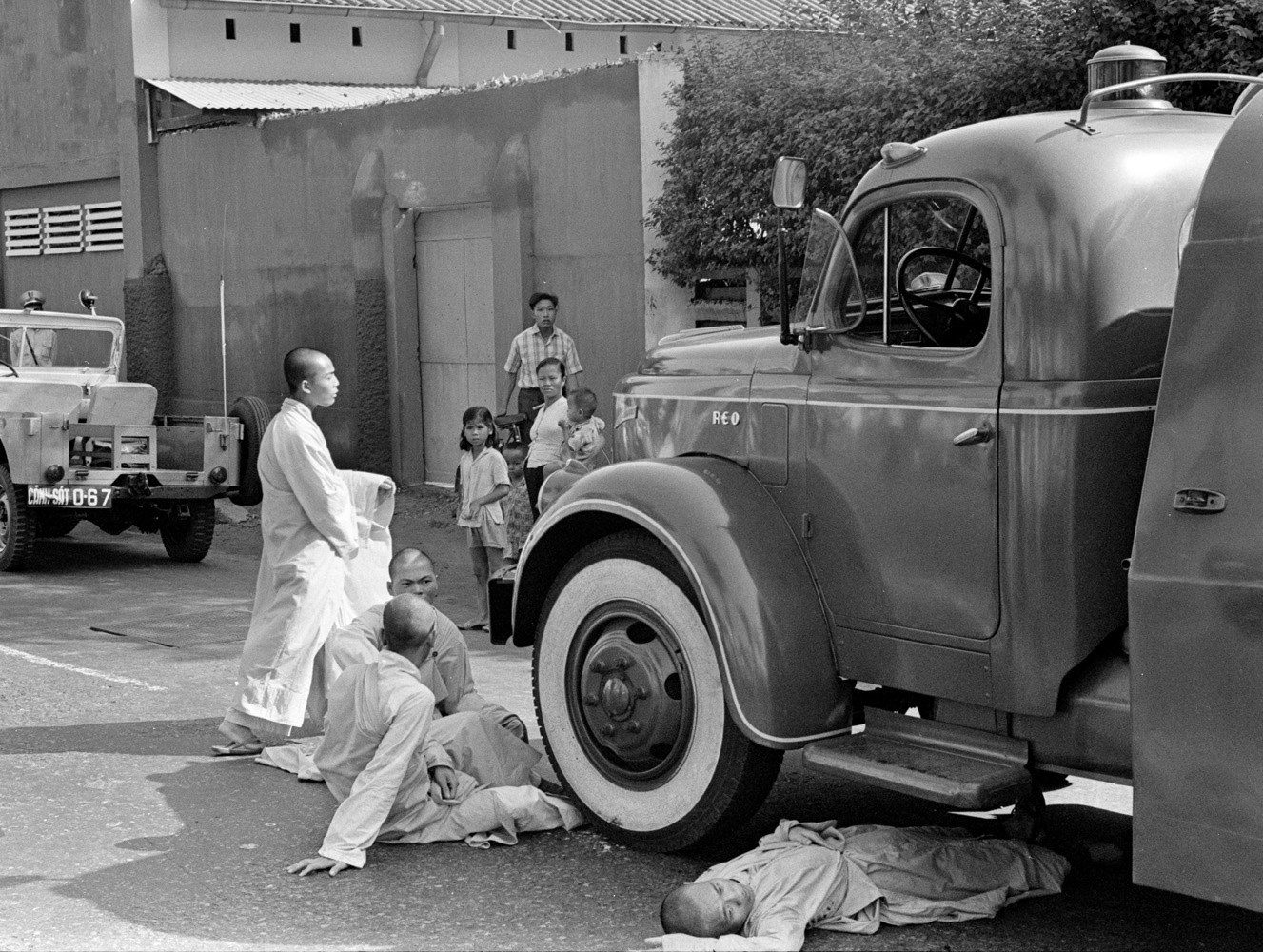

More Must-Reads from TIME
- Donald Trump Is TIME's 2024 Person of the Year
- Why We Chose Trump as Person of the Year
- Is Intermittent Fasting Good or Bad for You?
- The 100 Must-Read Books of 2024
- The 20 Best Christmas TV Episodes
- Column: If Optimism Feels Ridiculous Now, Try Hope
- The Future of Climate Action Is Trade Policy
- Merle Bombardieri Is Helping People Make the Baby Decision
Contact us at letters@time.com